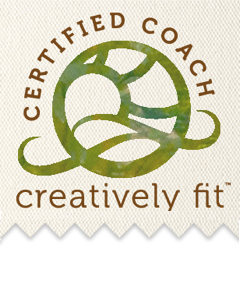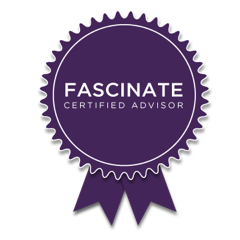 Recently, I read the Harvard Business Review’s 10 Must Reads on Innovation. Although my initial intention was to take a look at the latest articles on innovation, I came across this package of articles that said: “To innovate profitably, you need more than just creativity (emphasis added). Do you have what it takes? If you read nothing else on inspiring and executing innovation, read these 10 articles…” So, I did.
Recently, I read the Harvard Business Review’s 10 Must Reads on Innovation. Although my initial intention was to take a look at the latest articles on innovation, I came across this package of articles that said: “To innovate profitably, you need more than just creativity (emphasis added). Do you have what it takes? If you read nothing else on inspiring and executing innovation, read these 10 articles…” So, I did.
At first, the phrase “you need more than creativity” bothered me. After scrutinizing all the articles, I concluded that, in this context, creativity means new and novel ideas that spark innovation. Clearly, great product ideas are not enough for successful innovation. As I’ve mentioned in prior blogs, personal creativity is a prerequisite for innovation and the impetus for transforming ideas to value. Innovation occurs at the intersection of personal creativity and organizational discipline, and creativity is needed on the discipline side as well.
Ideas come from People; the ideas are analyzed and transformed through Processes into valuable Products/Technology, in an Environment where both ongoing operations and innovation occur, and produce value by Business Results that keep the company viable or make it great. The organizational system includes these five domains: People, Products/Technology, Processes, Environment, and Business Results. Personal creativity and disciplined integration of these five domains determine the success of a company. Creativity in the Product/Technology domain is not enough; it is needed in all five domains.
Books and articles tend to focus on Product innovation to drive Business Results. What is clear in this set of innovation articles is the importance of creativity in the People, Environment, and Business Results domains as well.
I scrutinized each of the ten articles and extracted directly from them 166 key points that are relevant to successful innovation. Then I organized the 166 key points into the five organizational domains. Innovation touches every domain, listed in order of the number of key points identified. Clearly, the big leverage is in the People and Process domains.
65 (39%) People domain
46 (28%) Process domain
20 (12%) Environment domain
20 (12%) Products/Technology domain
15 (9%) Business Results domain
The ten articles were written between 2002 and 2014 by authors affiliated with prestigious university business schools, some independent consultants, and one CEO. There were anecdotes about twenty-seven industries and sixty companies in nine countries. The content is very comprehensive and useful, even more so when organized into the five organizational domains! Below are some topics discussed in each domain.
People topics addressed in the ten Harvard Business Review (HBR) articles:
Sources of innovation; what effective innovators do; personality of innovators; importance of perceptions; role of the brain; where talents lie; requirements for successful innovation; mistakes people continually make despite what is known about successful innovation; the impact of feelings and emotions; problems with performance plans; leadership mistakes; problem of limited participation; trust; communication; relationship building.
Products/Technology topics addressed in the ten HBR articles:
What good innovation is; various sources of innovation; Big Innovation vs. little innovation; product strategy mistakes; technology bias; criticality of market knowledge; dangers of feature over customer focus.
Process topics addressed in the ten HBR articles:
The nature of the innovation process; the need for innovation process innovation; the difficulties around knowledge-based innovation; innovation process mistakes; using inappropriate metrics; process strategy mistakes; how innovation gets strangled; the “innovation pyramid;” the innovation funnel; the difference between high and low innovation companies; ways to find innovation opportunities; analytic methods that make it difficult to justify innovation opportunities; drawbacks of the Stage Gate process for innovation; the advantages of the Discovery-Driven process; the Glocalization (distributing worldwide the products of multinationals in developed countries) vs. reverse innovation (the process of developing innovative new products in emerging markets and taking them global) processes; division of tasks between current business team and innovation team; and processes for innovation team integration; utilization of resources; conflicts between innovation initiatives and ongoing operations initiatives; how surprises and failures are handled; timing; utilization of resources.
Environment topics addressed in the ten HBR articles:
Opportunities from the industry, outside the industry, market changes, unexpected occurrences, competition, demographics, changes in economic conditions, geopolitical events; culture clashes; conflicting agendas; differing priorities of developed and developing countries; the need for in-depth understanding of the total customer experience.
Business Results topics addressed in the ten HBR articles:
Shortcomings of corporate reporting systems; lapses in attention to innovation; tension between protecting existing revenue and supporting new concepts; pricing challenges; strategy challenges; “innovation funds;” dominance of minor innovations; pitfalls of discounted cash flow analysis; failure rates; the unreliability of financial forecasts; opportunity costs; the focus on short-term Earnings Per Share (EPS) vs. long-term innovation; threat to innovation from developing countries.
If the barriers, obstacles, and challenges of innovation are addressed across the five organizational domains, nothing should fall between the cracks, and innovation should be successful.
If you wish to know more about my analysis, please contact me. I’m happy to share about CLUE’s framework, methods, and offerings.
CLUE Institute shows people how to ignite their individual creativity so they can increase personal and team effectiveness across five domains, and fuel organizational innovation. CLUE is affiliated with hellofuture which helps you capture creative ideas from the minds of your employees, then moves those ideas right through to product development and launch, with minimal to zero impact to your current business.




